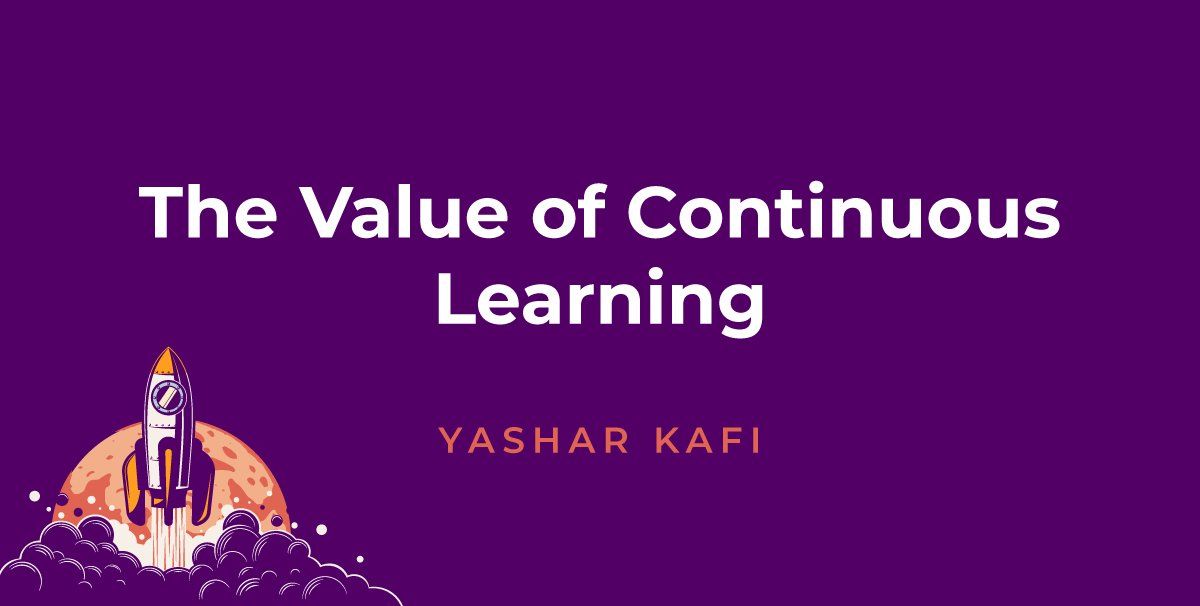The Value of Continuous Learning
I follow a wide variety of professionals on Twitter, and I recently came across an insightful quote from Adam Grant. Adam is an American famous science author and professor at the Wharton School of the University of Pennsylvania who specializes in organizational psychology. You could say he has an acute perception into human nature and what makes people tick.
The particular quote that had me floored reads: “When you only listen to the smartest person in the room, you miss out on discovering what the rest of the room is smart about. Everyone you meet knows something you don’t–and has wisdom from experiences you haven’t lived. Every conversation is a chance to learn something new.”
Excellent quote in itself—short, sweet, and to the point. In layman’s speak: Being the most intelligent person in the room is the dumbest thing you can be. Why? Because “that person” is the only individual incapable of learning—and the moment we stop learning, we stop growing and evolving, becoming complacent—and even worse—stagnant.
The Value of Continuous Learning
I especially love the importance that financial gurus Deloitte placed on continuous learning in one of their informative articles, going so far as to call it “critical.” Specifically, Deloitte stated that “As companies build the organization of the future, continuous learning is critical for business success.”
So, why all the hubbub? One huge reason is that continuous learning within the corporate setting helps keep employees engaged, which means bigger profits via savings. Data strongly supports this, with a recent study that reveals that disengaged employees cost businesses up to 7 billion (yes, BILLIONS) annually.
But it’s more than money that makes continuous learning worth your while. Continuous learning is also crucial for a sharply skilled workforce.
The Value of Skills
Now more than ever, skills are time-sensitive. The lifetime of a skill used to be 10-15 years, and now, according to a worldwide study conducted by IBM, it is just 5—and even less for technical skills. The reason for this is that the specific skills that employers are seeking and prioritizing in their hiring process continue to evolve and change—keeping pace with the accelerated speed that technology and industries themselves continue to advance.
The survey found that at least 50% of executives having a hard time finding the right fits cited their difficulties stemming from the lack of proactive employees in developing their current skills. Again, continuous learning is vital.
I’m a numbers guy, so let’s think about it this way: Say you start your career at age 22 and work until you’re 70. That’s 48 years, which means you will need to learn at least nine new skills throughout your career journey.
Now, factor in how long it takes to learn a new skill–employees and employers need to keep this in mind and be able to strike a balance between the skills that are quick to learn and that will have the most impact.
Employees Want to Learn
The great news is that employees aren’t fighting the idea of continuous learning. In fact, they are welcoming it with open arms. This is especially true of millennials in the workforce, who are quickly becoming the largest working population.
According to a LinkedIn learning survey, most employees (68%) want to learn at work. This majority percentage is not surprising at all to me. After all, think about what makes you feel happy/challenged at a job.
A lot of it is having room to “grow.” I mean, no one wants to hit a glass ceiling, right? The days of being satisfied to sit down in a cubicle and plunk away your life while hunched over a keyboard are long gone.
Bottom line: Times are changing at light speed, and continuous learning is the only way we can ensure that we don’t become the dinosaurs left in the dust.




